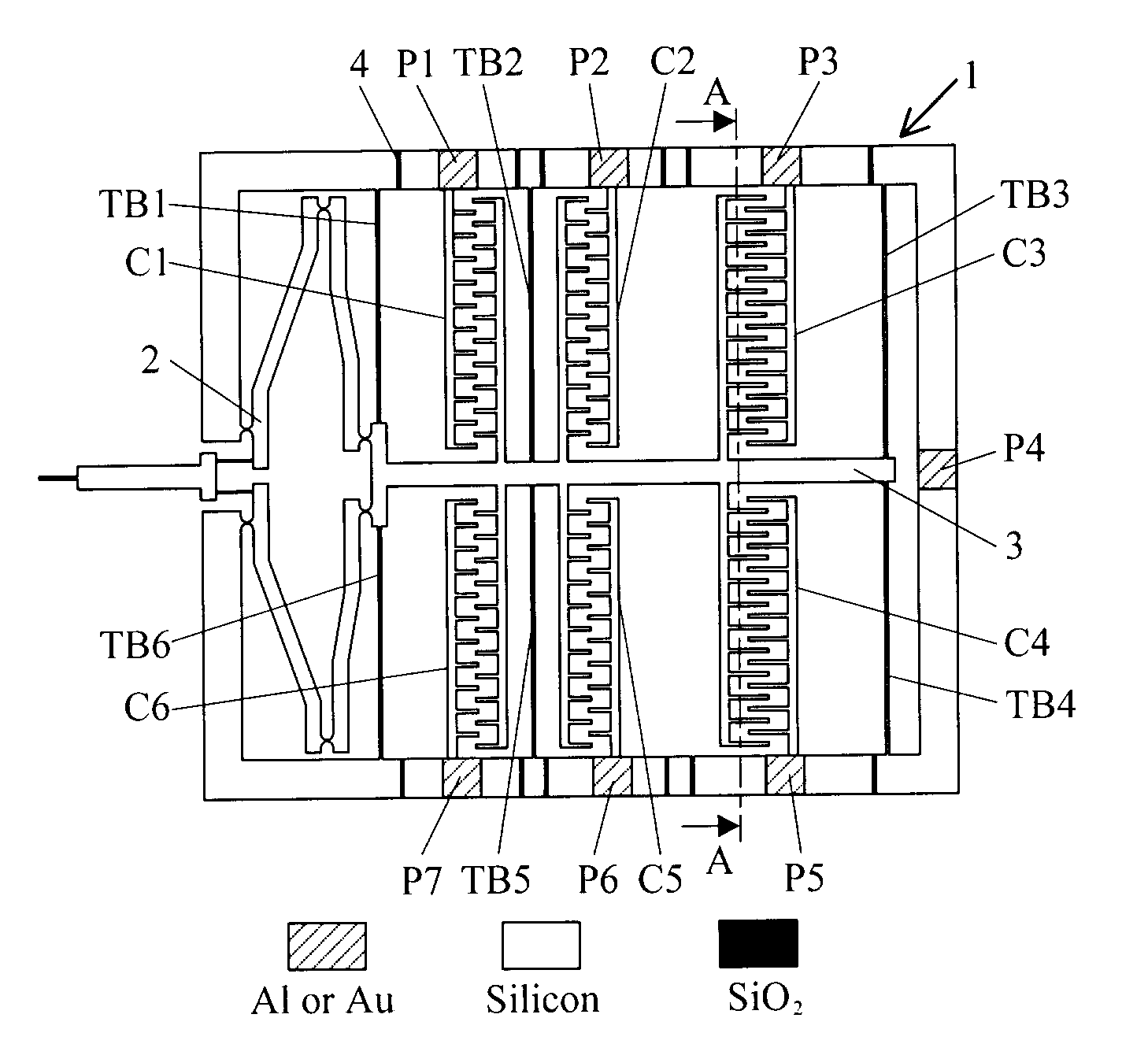Mems-based nanopositioners and nanomanipulators
a technology of nanopositioners and manipulators, applied in manipulators, electrical apparatus, electrostatic generators/motors, etc., can solve the problems of difficult temperature control at the probe tip, preventing the use of temperature sensitive applications, and limited application of this device, etc., to achieve fast response, high repeatability, and precise closed-loop control
- Summary
- Abstract
- Description
- Claims
- Application Information
AI Technical Summary
Benefits of technology
Problems solved by technology
Method used
Image
Examples
Embodiment Construction
[0029]The present invention provides a MEMS-based nanomanipulator which can achieve both sub-nanometer resolution and millimeter force output. An integrated displacement sensor is also provided to obtain position feedback that enables precise closed-loop control during nanomanipulation.
[0030]It should be expressly understood that the present invention functions either as a nanomanipulator or as a nanopositioner. As a nanomanipulator, besides the applications described herein, the device can be applied to precisely interacting with biological molecules, such as for biophysical property characterization or precisely picking and placing nano-sized objects, such as nanotubes / wires and nano particles. As a nanopositioner, the device can find a range of precision applications for in-plane positioning, for example, as an x-y precision positioner that can be mounted on the suspension head of a computer harddrive for data transfer. Currently, a meso-scaled piezoelectric positioner is used on...
PUM
 Login to View More
Login to View More Abstract
Description
Claims
Application Information
 Login to View More
Login to View More - R&D
- Intellectual Property
- Life Sciences
- Materials
- Tech Scout
- Unparalleled Data Quality
- Higher Quality Content
- 60% Fewer Hallucinations
Browse by: Latest US Patents, China's latest patents, Technical Efficacy Thesaurus, Application Domain, Technology Topic, Popular Technical Reports.
© 2025 PatSnap. All rights reserved.Legal|Privacy policy|Modern Slavery Act Transparency Statement|Sitemap|About US| Contact US: help@patsnap.com



